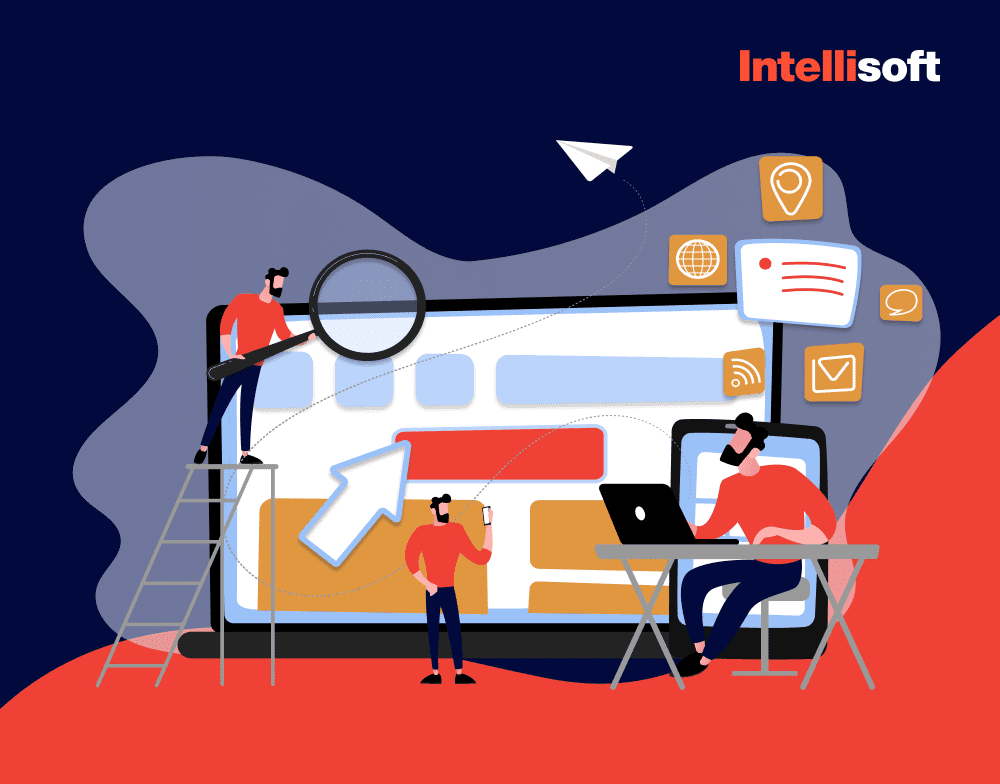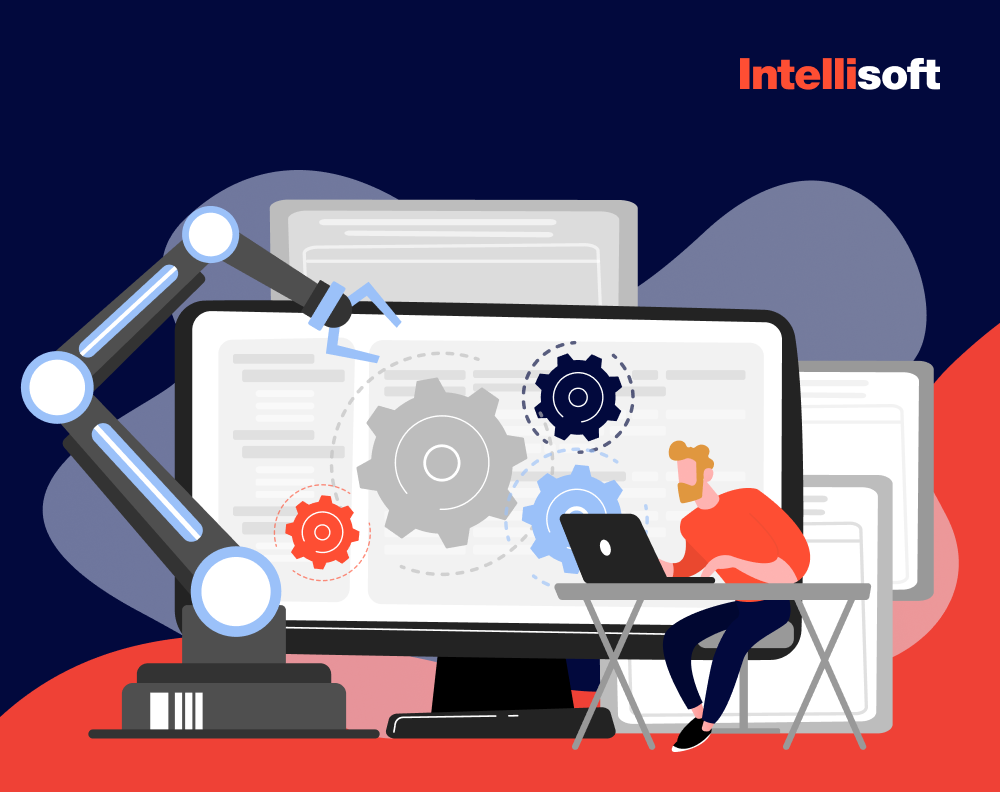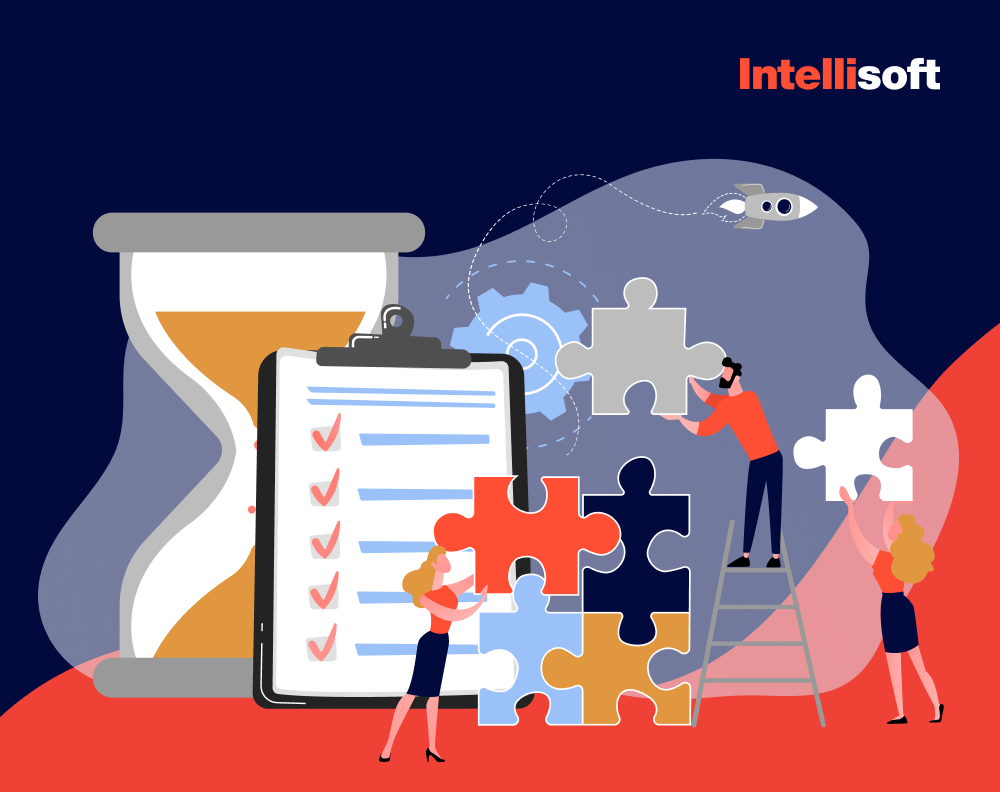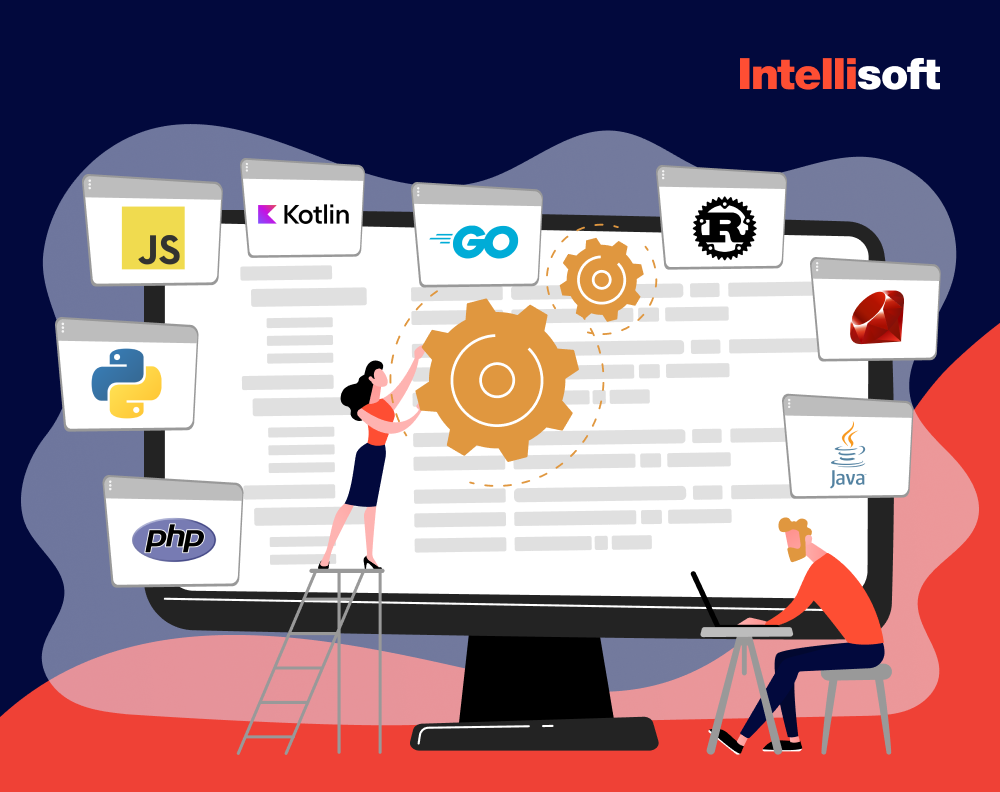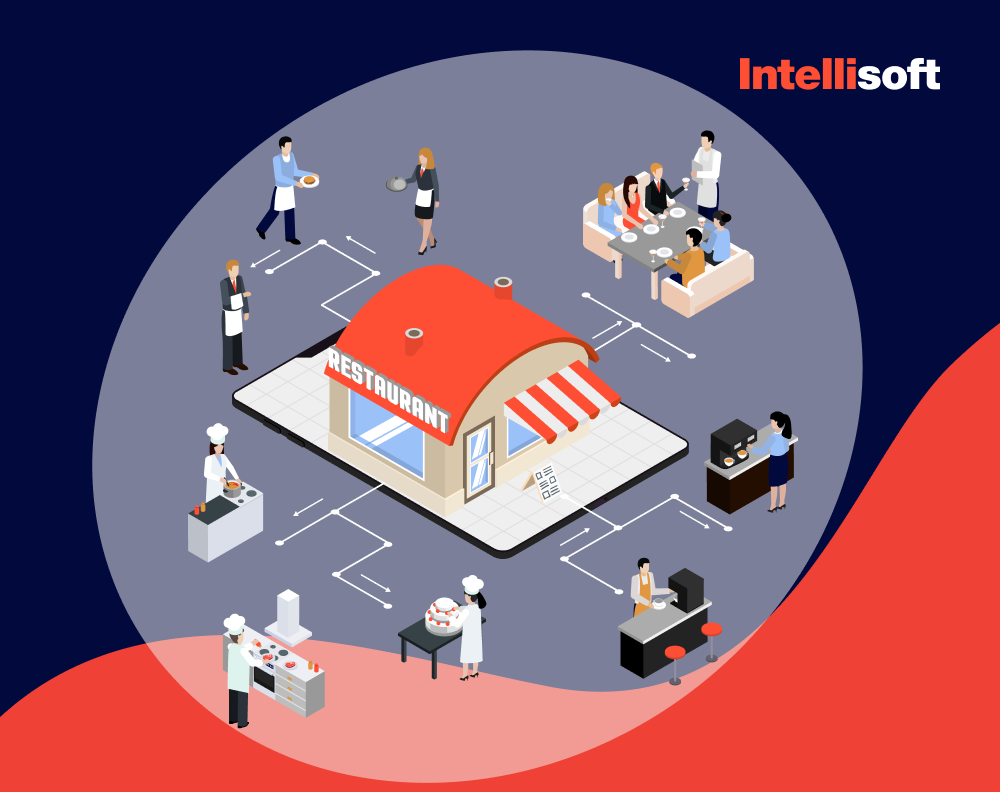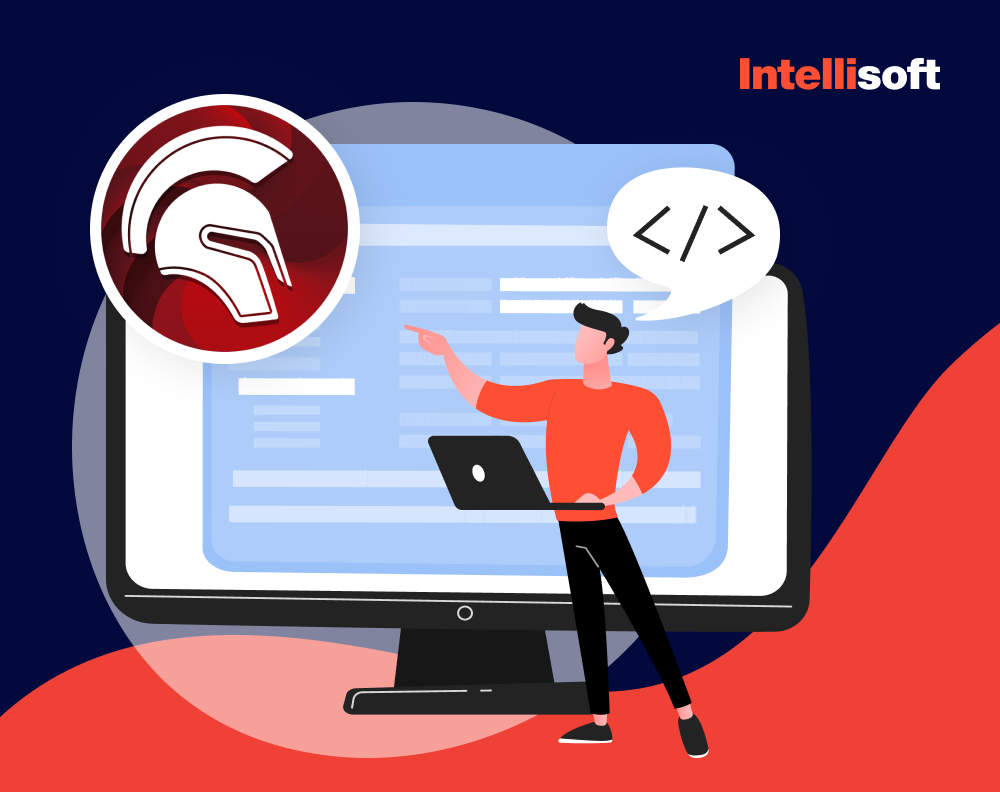Have you been brimming with ideas for new software you want to create from scratch? You’re in luck because a good idea for software is the first step to success in virtually every industry. As technology becomes more integrated into our lives, the demand for innovative solutions is higher. It may seem daunting to build a software program from scratch, but following a step-by-step process can turn your idea into a reality.
At IntelliSoft, we’ve been creating custom software solutions from scratch for over 15 years and have established ourselves as a leader in developing innovative, efficient, and scalable tools. This guide will take you through the intricate software development process from the ground up. We will reveal the essential strategies, cutting-edge technologies, and innovative practices that will empower you to build a competitive and successful solution.
Whether you’re aiming to disrupt markets or enhance operational efficiency, we’re here to answer the question, “How to build software from scratch?” Let’s embark on this journey together, crafting software that meets and exceeds expectations.
Table of Contents
Make Preparations
To ensure the success of your coding project, it’s crucial to establish a solid foundation before you begin writing code. This preparation phase is essential for aligning your team’s efforts and ensuring everyone is working towards the same objectives. It also helps establish a transparent workflow to streamline the software development process from scratch and minimize errors.
By laying down a robust groundwork, you can set yourself up for success and avoid the pitfalls that often plague coding projects that are rushed into development without proper planning and preparation.

Flesh Out Your Idea
Investing some time to fully understand the issue your software aims to resolve, and determine the methods it will utilize to accomplish this goal, is essential. It’s crucial to consider how your solution stands out from other alternatives that are currently available. Developing an elevator pitch can help summarize your software’s unique selling points. The more you perfect your concept and refine your approach, the smoother the beginning stages of your project will be.
Set Your Team Up for Success
When embarking on a new project, it’s natural to feel a sense of excitement and anticipation. However, stepping back and establishing a solid foundation for your software development team, before diving into the design process, is essential. This approach means defining norms and expectations for how the team will operate and ensuring that everyone understands the project’s goals and objectives.
By setting clear expectations from the outset, you can avoid common pitfalls such as miscommunication, confusion, and frustration, which can ultimately result in significant downtime and setbacks for your team.
Establish Clear Roles & Paths for Communication
Forming a cohesive team that understands each member’s role is essential when building software from scratch. To achieve this, it’s crucial to define who will lead the project and who should be approached for any questions or issues. This clarity ensures everyone is on the same page and can work effectively towards the common goal.
In addition, it’s important to establish preferred communication norms from the beginning. This approach could include email, text, group chat, Slack, or other communication channels. By deciding which channels will be the primary platform for communication, team members can prioritize checking those channels. This method helps create healthy work boundaries and ensures team members can effectively manage their time and workload.
Define Best Practices
One of the most significant advantages of working in a team is each member’s diverse experiences. Regarding software development, team members who have previously worked on software projects can leverage their past successes and mistakes to ensure the current project runs smoothly.
To benefit from this, it is essential to bring your team together and encourage them to share their experiences. By discussing what worked well in the past and analyzing what didn’t, you can gain valuable insights to help you avoid common pitfalls and optimize your development process.
Additionally, you can use this opportunity to gather suggestions for conventions and norms that can keep your project on track. By involving everyone in this process, you can ensure that the best practices you adopt are comprehensive and effective.
At the end of this process, your team will have a list of best practices that everyone agrees to follow. These practices can serve as a valuable reference point as you build your software from scratch, ensuring that you maintain high quality and consistency throughout the development process.
Choose a Continuous Integration System
Continuous integration is a crucial process that allows for the seamless integration of code changes made by multiple contributors into a single code project. By implementing a continuous integration system, your team can confidently update code and ensure its correctness before integrating it into the codebase.
Several continuous integration systems are available on the market that can make updating your project’s codebase a breeze. It is recommended that you work with your software development team to determine which system they prefer and assess the cost of implementing one that suits your team’s needs.
Brainstorm & Plan
To ensure your software is successful, it’s crucial to dig deeper into how it will meet the user’s needs. This approach requires a complete understanding of the problem your software is designed to solve, which will enable you to articulate the most effective solution. You should also research other existing solutions, or attempts at solutions, and analyze where they fall short to identify how your software will perform better.
The discovery phase is the most critical stage of software development. Here, you will set goals for the project timeline, determine your budget, and strategize how your software will meet the business strategy objectives. This will clarify what you need to achieve and how to get there.
By the end of the planning phase, you will have determined the scope of your project and be ready to move forward in the development process, equipped with a solid foundation for success.
Requirements & Feasibility Analysis
Once you have determined the extent of your software project, the next step is to dive into its details. This will involve assessing its feasibility and determining what requirements are necessary to move forward with the development process. To do this, a thorough feasibility analysis is required. This analysis will outline the technical aspects of the development process, including:
- Time
- Resources
- Tasks
- Cost of each team member’s involvement
This analysis helps estimate development costs and potential profits while identifying potential risks at the start, preventing surprises later.
Design
As you develop your software, you will soon reach a crucial stage. It is time to conceptualize and design your software’s solution. This process involves mapping the workflow and sketching the screens your software will use to achieve its goals.
The design process is an extensive and comprehensive stage that encompasses everything from the big vision of how your software will look and feel to the detailed functions that make up your solution. The development team works together to determine the fundamental software and hardware components, structure capabilities, and the various processes required to reach the tool’s objective. Each aspect of the software architecture is carefully considered to ensure the smooth and successful operation of the tools.
Coding & Development
Now that the design documentation is ready, it’s time to develop the software. This phase takes the longest time and requires the most effort as it forms the backbone of the entire program.
Your engineering team needs to create code that meets the programming requirements and any other demands set by the stakeholders for the software.
The release cycle of the developed product goes through various stages, such as MVP, alpha, beta, release candidate, and finally, the actual production build. At IntelliSoft, we’re proficient in MVP Development, helping you create a Minimum Viable Product that brings your vision to life efficiently and effectively.
Testing & Integration
As you prepare to launch your software, it’s essential to ensure that it’s performing optimally. Your quality assurance team will conduct a series of tests using a set of frameworks to evaluate different aspects of your product’s functionality, systems integration, user experience and interface, and interoperability with other software.
During the testing phase, the team may identify bugs or issues that need fixing to ensure your tool performs as expected and meets the required standards. It’s also necessary to verify that the verification processes in your software are working correctly to ensure that it’s functioning optimally.
Once the testing phase is complete and your digital solution has been finalized, you can implement and roll out your product with the confidence that it meets the necessary quality standards and is ready for use by your customers.
Implementation & Roll Out
One of the most thrilling moments in the software development process is finally deploying your software and making it available to the public. To ensure a successful deployment, following your team’s implementation plan is crucial. You should also ensure that the software is integrated correctly into appropriate platforms so users can find and use it easily.
However, deploying your software is not just about the technical details; it’s also essential to have a well-planned marketing strategy. Before you reach the deployment stage, ensure you have a solid plan for promoting your product and attracting new users. Having a strong user base lined up and ready to engage with your software solution on the rollout day will greatly increase your chances of success.
Operations & Maintenance
Lastly, your team should be prepared to respond to customer support requests and bug notifications. Regular maintenance will be necessary to keep your solution running smoothly. Your users will appreciate feeling heard and understood when they reach out for support, which will help increase customer loyalty.
To keep your software running smoothly, it is recommended that you create a dedicated maintenance team. This team will oversee the rollout of updates down the road and ensure that your software remains up-to-date.
5 Most Popular Software Development Methodologies
A team’s selection of tools and methodologies for design, testing, management, and software product development processes are based on the team’s goals and the product’s objectives. Experienced teams usually rely on popular software development models to achieve these goals. Let’s take a look at them.
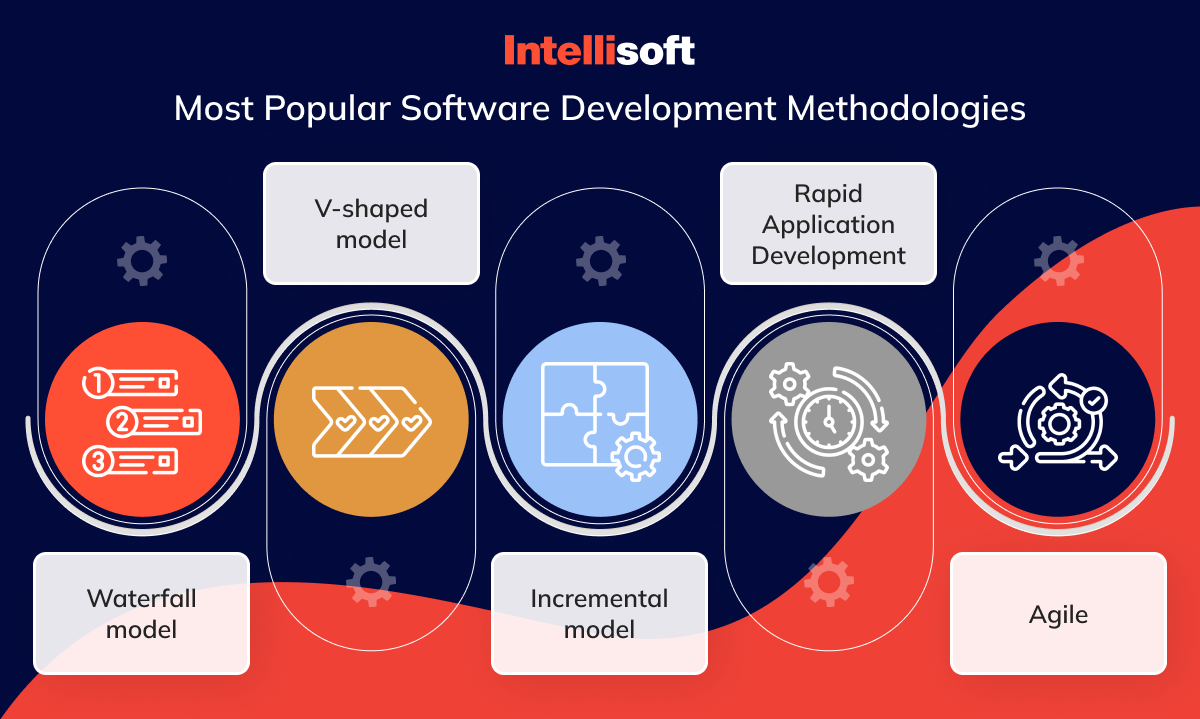
Waterfall model
The waterfall model is a sequential approach where each process stage must be completed before the next one begins. This approach means that the development team moves through the stages in a linear fashion, starting with the requirements gathering and analysis, followed by design, implementation, testing, and finally, deployment. In the context of the waterfall model, quality assurance (QA) engineers don’t begin their testing until the programming stage is fully completed.
V-shaped model
The V-shaped model follows a similar approach to the traditional waterfall model but with one key distinction; testing is integrated into each stage of the software development process. This approach means that testing occurs concurrently with other significant steps, ensuring any issues are identified and addressed promptly.
Incremental model
The incremental model is a development approach that breaks down the product creation process into smaller, more manageable builds. Each build corresponds to a distinct set of functionalities and features, and the product is gradually assembled by combining these individual building blocks. Essentially, the incremental model is like solving a puzzle, with each piece contributing to the overall picture of the final product.
Rapid Application Development
Rapid Application Development (RAD) is a popular model utilized by companies for project development. In this model, the entire project is divided into smaller tasks, and each task is assigned to a small team. These teams work simultaneously and in close collaboration to speed up the development process. This approach allows for fast-paced software development and enables businesses to respond quickly to changes in the market.
Agile
Agile methodology is a widely accepted approach to software development that adopts an incremental model. It emphasizes the delivery of high-quality software in small, incremental releases, with each release building upon the previous one. Agile is highly valued by both software development teams and customers alike due to its ability to produce fast and continuous results. Rather than measuring the time taken for each build in months, Agile methodology focuses on measuring time in weeks. This popular approach guides entrepreneurs towards creating solutions that are not only efficient but also of high quality.
Related articles:
- How to Make a Live Streaming Website from Scratch: Expert Tips
- How to Build a SaaS Product: A Complete Guide
- White Label Software Development Guide
- How to Create an API: A Comprehensive Guide
- Guide to Software Requirements Specification
Key Roles of Software Development Team
To achieve success with your product, it is essential to have a team of highly skilled and diverse tech professionals who can fill the key roles necessary to build and scale it. Let’s learn how to build a software company from scratch.
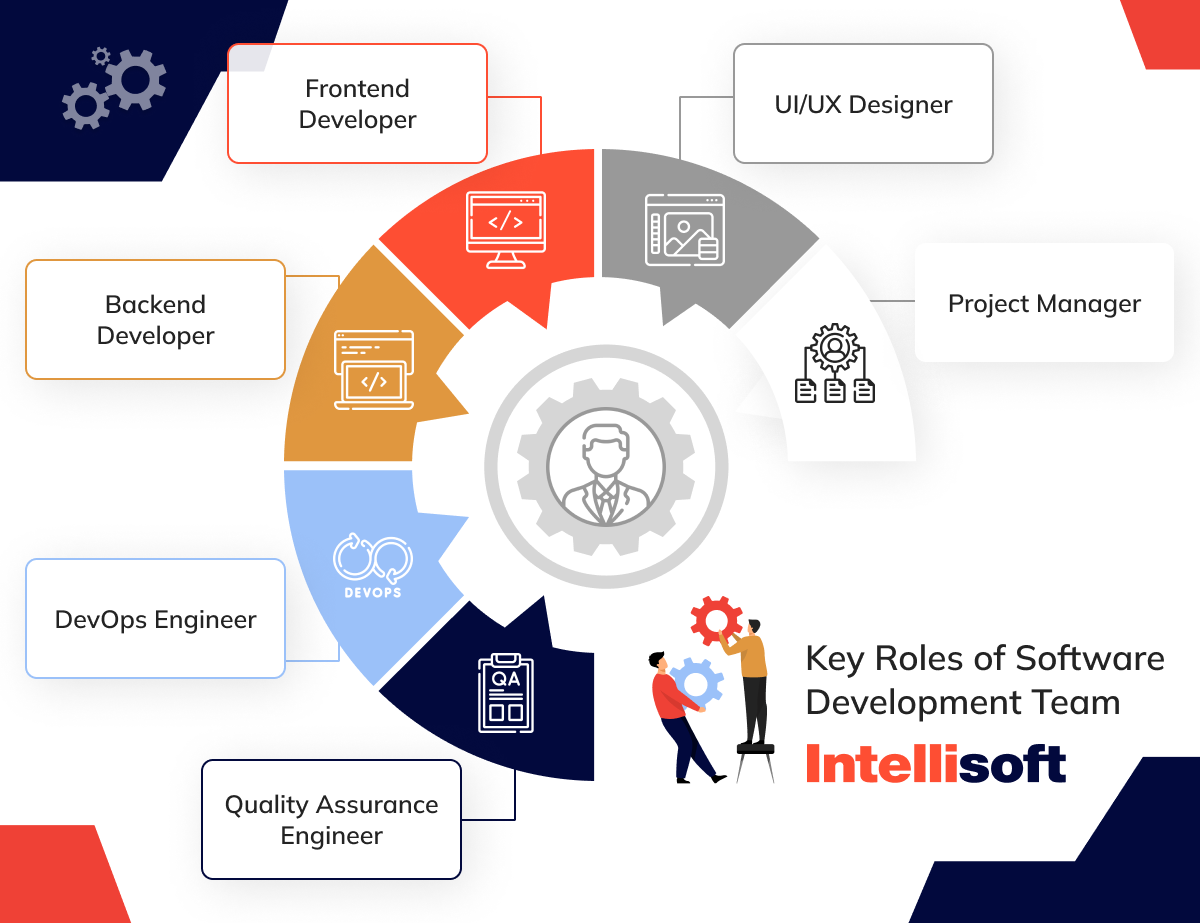
Project Manager
A project manager plays a crucial role in ensuring the successful execution of a project. They are responsible for a wide range of tasks, including breaking the project into smaller, more manageable tasks, defining clear and measurable milestones, identifying the dependencies between various elements of the project, directing the team toward achieving the project goals, prioritizing tasks based on their importance, managing resources effectively, and deploying deliverables on time.
In addition to these core responsibilities, project managers are also responsible for closely monitoring the project’s progress, identifying and addressing any challenges that arise, conducting regular meetings to ensure everyone is on the same page, and coordinating with clients to ensure their needs and expectations are met.
UI/UX Designer
User Interface and User Experience (UI/UX) designers are responsible for gathering user requirements, illustrating design ideas, designing UI elements, creating navigation buttons, developing UI prototypes, identifying UX problems, conducting layout adjustments, and adhering to style guidelines.
Frontend Developer
You need a frontend developer to create user-friendly web pages using programming languages such as HTML, CSS, JavaScript, jQuery, and Bootstrap. They also optimize the software to load instantly, maintain and improve it, collaborate with backend developers to improve usability, create quality mockups, conduct usability tests, etc.
Backend Developer
A backend developer is responsible for writing server-side code and APIs. Their main role is creating, managing, testing, and debugging application logic, APIs, databases, integrating data, and other behind-the-scenes processes.
DevOps Engineer
Another essential part of the software development team is the DevOps engineer. Their responsibilities involve:
- Managing servers
- Deploying updates
- Providing level 2 tech support
- Integrating infrastructure as code approach
- Establishing CI/CD pipelines
- Maintaining containers and orchestration
- Performing root cause analysis to resolve production errors
Quality Assurance Engineer
Quality assurance engineers are crucial for testing the entire software. They design and plan test strategies, choose testing tools, conduct or automate testing processes, track test results, and report bugs.
Software Development Models Based on Sourcing
The software development life cycle involves several essential roles that contribute to the success of the development process. However, choosing a suitable sourcing model for your development team can be challenging. If you are unsure which approach to take, let me inform you about the two most commonly used sourcing models you can consider.
In-House Software Development Team
Hiring, training, and utilizing in-house developers’ skills to create software for your business is called in-house development. While this approach allows for direct supervision of the team’s productivity, it can be expensive due to the need for investment in employee training, equipment, office rent, and other expenses.
Additionally, as mentioned in the previous section, hiring talented professionals for different roles can slow down the project’s launch. The entire team needs to familiarize themselves with each other’s working styles before working together as a cohesive unit. This is important to ensure there are no mishaps during the project.
Outsourcing Software Development Team
One of the most popular and cost-effective methods of software development is outsourcing. This approach involves hiring a third-party development team to work on your project without investing much money.
Outsourcing has many benefits, including access to top talent worldwide, reduced management efforts, and faster delivery of your software project.
Moreover, the outsourcing software development team take full responsibility for team management, risk management, and ensuring the quality of deliverables, which can help relieve stress and ensure a successful project outcome.
Cost of Building a Software Application From Scratch
Building software from scratch can be complex and involves several factors that can affect the cost. These factors include the development team’s size, the project’s duration, and the technology stack used. It’s important to note that the choice of technology stack can significantly impact the cost of development. For instance, open-source technologies may be more cost-effective than proprietary solutions.
In addition to the technology stack, the level of customization required also affects the project’s overall cost. Projects that require more customization and personalization may require more resources, time, and effort, which can result in higher costs.
Moreover, the complexity and features of the software product also play a crucial role in determining the development cost. Products with more features and functionalities will require more development time and resources, which can lead to higher expenses.
Below are the average costs for software development based on project size. However, any general cost estimation must consider the abovementioned factors to be informative enough.
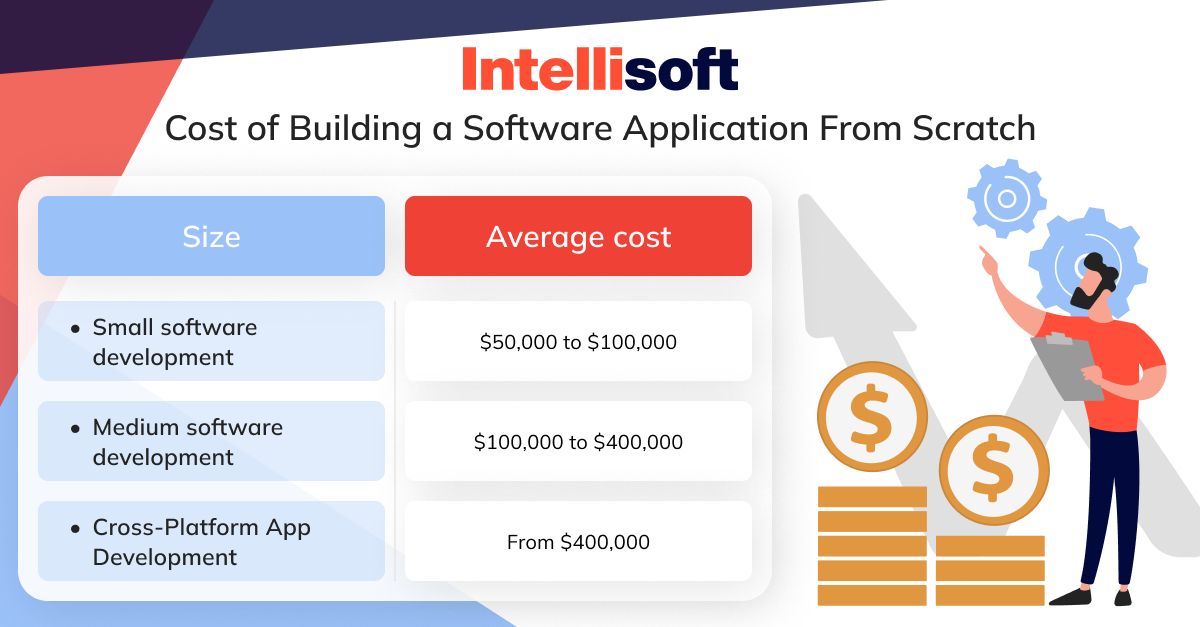
How Long Does it Take to Build a Software Product?
Determining the exact time frame for developing a software product can be a complex task, as several factors can influence the duration of the process. To develop a software product efficiently, it is essential to establish a clear timeline in advance and collaborate with a skilled development team to set realistic deadlines.
The time required to build a product can vary depending on various factors, such as the complexity, size, and scope of the product, the chosen project management approach, and the experience and composition of the development team. Other factors that can impact the duration of the software development process include the development methodology employed and the product’s features and functionality. To give you an idea of the average time required for each development stage, please refer to the table below.

Here’s how to create software from scratch depending on project complexity:
- Small: 2-6 months
- Medium: 7-12 months
- Complex: 12+ months
If you find it challenging to assess the complexity of your project or need further clarification on the timeline, reach out to IntelliSoft. Our team of experts can provide you with personalized guidance and insights to help you make informed decisions regarding your project.
With our expertise and state-of-the-art solutions, we can assist you in designing a software solution that not only streamlines your operations, but also sets you on a path towards growth and customer satisfaction. Don’t miss out on the opportunity to benefit from our knowledge and resources in this dynamic field. Contact us, and let’s start this journey together.





